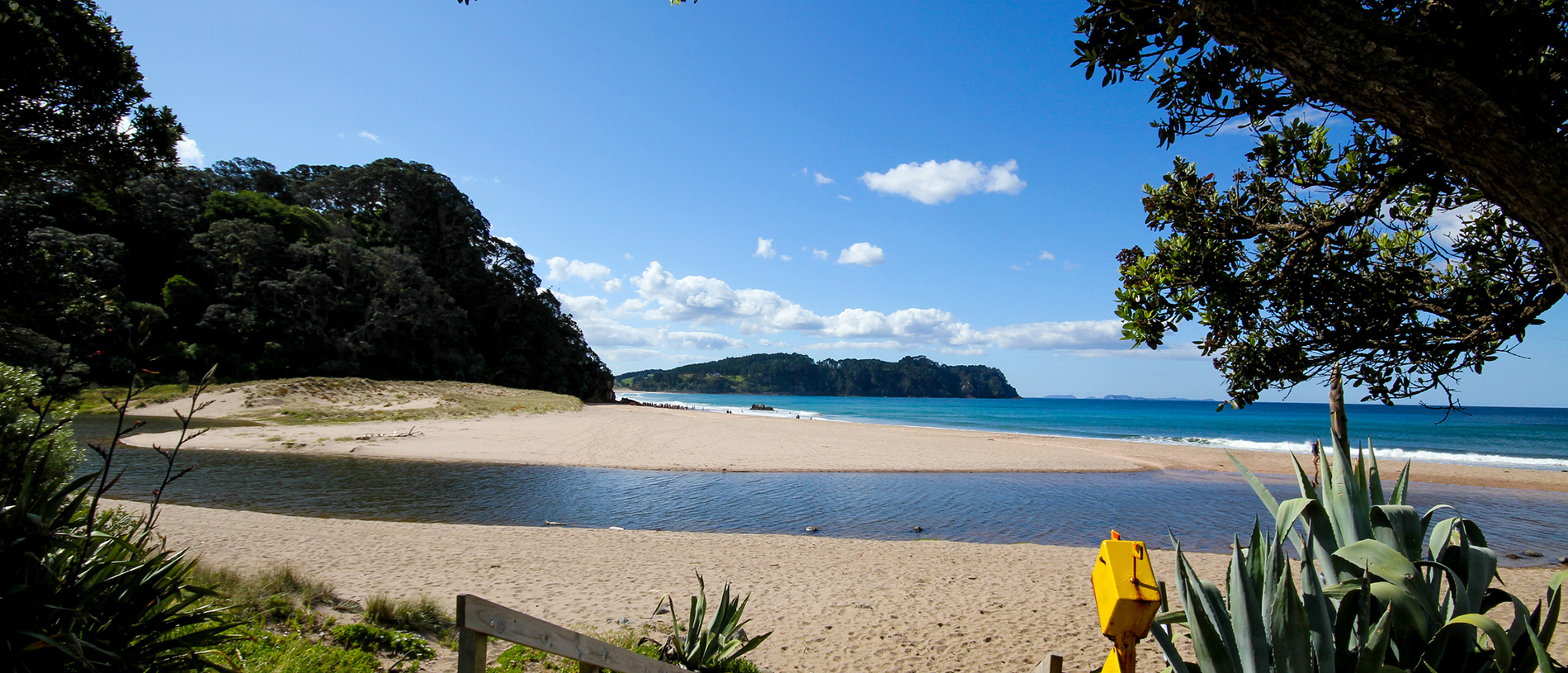
Hot Water Beach: BYO spade
Just beneath the surface of the sand is a delicious, natural underground river that brings hot water to the beach almost on tap, so to speak.
The entire eastern coastline of the Coromandel Peninsula is studded with jewel-like beaches. The sand is white, the pōhutukawa crimson, the water warm and clear... What, you ask, could be nicer?
Drop into Hot Water Beach, a few kilometres as the seagull flies down the coast from Whitianga, and you’ll find out. But remember to take a spade: the bucket is optional, but a garden spade or contractor’s shovel is not.
The name probably gives the game away, but the distinguishing feature of Hot Water Beach is the hot water that you can uncover by shifting a few inches of sand in the intertidal zone.
The Coromandel Range marks the line of a volcanic fault and, geologically speaking, are continuous with the Kaimāīs, the range that separates the Waikato from the Bay of Plenty and terminates, significantly as it seems, in the geothermal wonderland of Rotorua. There’s some fringe benefits to living smack bang on top of the volcanic Ring of Fire, and New Zealand’s geothermal resources are one of these.
There are several hot springs in this area, dotted along the line of the fault. Sapphire Springs, just north of Katikati, is one example. The springs at Te Aroha and at Miranda on the Firth of Thames are others. Hot Water Beach draws its heated water, broadly speaking, from the same source.
Come here a couple of hours either side of low water and you’ll see any number of people – individuals and groups – digging for all they’re worth. As their holes deepen, they fill with water, and presently, when everyone reckons they’ve gone down far enough for a decent soak, it’s time to down tools and pile in.
Everyone lies there happily for a while. Then it’s not uncommon to see a new round of earthworks commence as overheated soakers drive trenches to the low tide mark, to induct cooler water into their tubs to lower the temperature a bit.
The view from your improvised hot tub is pretty gratifying, too. You can contemplate the wide Pacific horizons out there beyond Castle Island and the nice, clean swell that Hot Water Beach gets on its day. And, of course, if you have too much of a good thing, you can always make a dash for the surf to cool off.
Eventually, the incoming tide overwhelms the thermal zone and the waves erase all traces of the enthusiasm of that session’s balneologists.
A beach with hot and cold running water: how cool – or hot – is that?